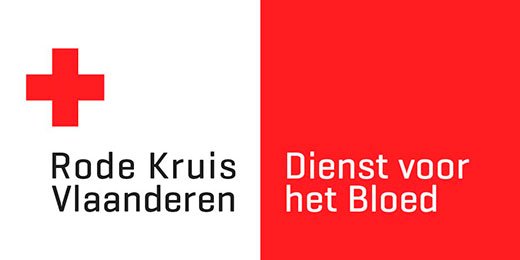Virus-inactivated cryosupernatant plasma
This product data sheet describes a patient-specific blood product that is only prepared to order in the context of specific indications. It is intended for a specific patient and is requested through a separate ordering procedure with the order form for patient-specific blood products. To ensure timely delivery, it must be ordered 24 hours in advance.
Product Codes
Code 'Blood Service'
Out of full blood:
E6112V00
From apheresis:
E6114V00
E6112VA0
E6112VB0
E6112VC0
NIHDI Code
Hospitalized: 752 441
Non-hospitalized: 752 430
Preparation and composition
Cryosupernatant plasma is plasma from which the cryoprecipitate was removed. Fresh frozen, virus-inactivated human plasma (VPVIM) is used as the starting product. The plasma is thawed slowly - over a period of at least 12 hours - at 4 °C. In the process, a cryoprecipitate is formed. By centrifugation, this cryoprecipitate is precipitated, after which the supernatant - the cryosupernatant - is transferred to the final storage bag. Compared with ordinary virus-inactivated plasma, the content of FV, FVIII, fibrinogen and von Willebrand factor multimer is reduced in cryosupernatant plasma.
Indications
Thrombotic thrombocytopenic purpura (Moschcowitz disease) resistant to treatment with plain-fresh frozen human plasma, virus-inactivated.
Contra-Indications
Do not use virus-inactivated cryosupernatant plasma in case of previous allergic reactions to methylene blue or its derivatives.
Transfusion of virus-inactivated cryosupernatant plasma is contraindicated in patients with G6PDH deficiency.
Dose and instructions for use
Dose
Usually 1 to 1.5 times the patient's plasma volume is switched.
Special precautions
Administration of plasma assumes ABO blood group compatibility. If the patient's blood group is not known, plasma of blood group AB can be administered urgently.
The safety of VPVIM in pregnancy and lactation has not been adequately documented in controlled clinical trials. In such cases, VPVIM can be administered only when heavily indicated.
User Manual
The plasma exchange procedure uses a two-needle system. The plasma is connected to an intravenous return line. The collection of blood is done by a second intravenous access route. Along this same access route, calcium gluconate 10% may need to be administered during plasma substitution (1 ml per 100 ml of plasma).
Plasma should not be mixed with drugs and should not be administered through the same intravenous line as calcium-containing solutions. Any residues will be disposed of as medical waste.
Possible undesirable effects when the product is administered
The most frequent side effects of blood product transfusion are chills, fever and symptoms of an allergic nature such as urticaria and itching.
Serious, potentially fatal, adverse reactions include circulatory overfilling with pulmonary edema, transfusion-related acute lung disease (TRALI), hemolytic transfusion reaction due to plasma incompatibility, and severe allergic reactions such as anaphylactic shock. In addition, posttransfusion purpura and citrate toxicity may occur. Through blood and blood derivatives, infections can be transmitted notwithstanding the virus inactivation process: B19 parvovirus and HAV are the most important. Despite the virus inactivation process, the transmission of infection by other viruses cannot be completely excluded.
If an acute transfusion reaction occurs, administration should be stopped immediately and appropriate symptomatic therapy initiated.
In case of a mild allergic transfusion reaction (itching, redness, urticaria), administration may be continued after administration of antihistamines or corticosteroids, if necessary.
Medication and other interactions
The cryosupernatant plasma should not be mixed with drugs or infusion fluids . In view of possible clot formation, calcium-containing solutions should not be administered through the same intravenous line as plasma preparations. Interactions with drugs after administration are not known.
Preservation and stability
The storage time of cryosupernatant plasma is up to 24 hours at 4 °C.
Presentation and size of packaging
Cryosupernatant plasma, virus-inactivated, is delivered in the liquid state, in plastic bags of about 200 ml. Usually they are prepared per 16 bags, or multiples thereof.
Pharmacological and toxicological properties, pharmacokinetics and bioavailability of therapeutic importance
Pharmacological properties
After transfusion, the half-lives of the biological substances present in the virus-inactivated cryosupernatant plasma are within normal values. Thanks to intravenous administration, the biological substances are immediately available.
Toxicological properties
Het plasma bevat < 16µg/l methyleenblauw
Safety of products prepared from human whole blood
Plasma is obtained from voluntary, non-remunerated donors, selected in accordance with the standards established by Belgian legislation and the procedures of the Blood Service of Belgian Red Cross-Flanders. For the preparation of fresh-frozen, virus-inactivated plasma, only plasma from male donors who were negative when tested for irregular antibodies is used.
With each donation, the donor is inspected by a physician and tested for antibodies against the human immunodeficiency viruses (anti-HIV-1 and HIV-2), for antibodies against the hepatitis C virus (anti-HCV), for the hepatitis B virus surface antigen (HBsAg) and for antibodies against Treponema pallidum. HIV, HBV and HCV are also detected by NAT testing.
Products from donations with positive test results are destroyed.
Moreover, specific virus-eliminating steps were incorporated into the production process of the fresh-frozen, virus-inactivated plasma.
When products prepared from human blood are administered, transmission of an infectious agent cannot be completely excluded. This also applies to hitherto unknown pathogens.
Episode
By medical prescription, after order.
Order at least 24 hours before the desired delivery time.
Last updated 11/04/24.
